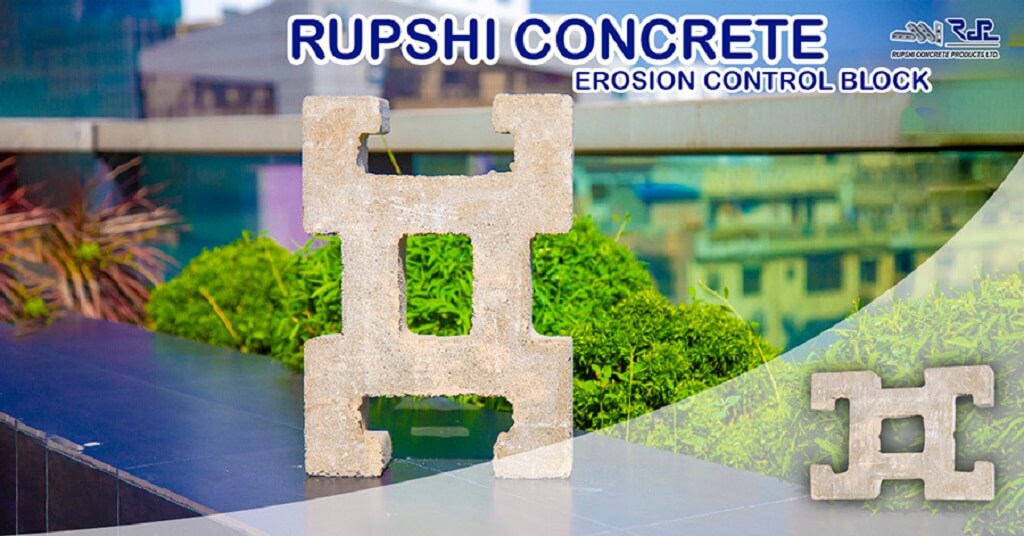Eco-Friendly Concrete Blocks – The Future of Green Construction in Bangladesh

Building a Greener Tomorrow Starts with Stronger Choices
Bangladesh’s construction industry has evolved rapidly over the last decade. As cities expand and new infrastructure rises, one question keeps emerging — how can we build without harming the environment? The answer lies in eco-friendly concrete blocks, a sustainable alternative that’s revolutionizing the building materials market.
Traditional burnt clay bricks have served us for centuries, but their production consumes valuable topsoil, burns fossil fuels, and releases tons of CO₂. In contrast, eco-friendly concrete blocks combine strength, durability, and sustainability — perfectly suited for Bangladesh’s future of green construction.

What Are Eco-Friendly Concrete Blocks?
Eco-friendly concrete blocks are modern masonry units made using cement, fly ash, stone dust, and recycled aggregates instead of clay and coal. They’re engineered for both structural performance and environmental protection.
| Feature | Eco-Friendly Concrete Block | Traditional Clay Brick |
|---|---|---|
| Raw Materials | Cement, fly ash, recycled dust | Topsoil, coal-fired clay |
| Energy Source | Low – water curing | High – coal kiln burning |
| CO₂ Emission | Up to 60% lower | Very high |
| Lifespan | 40+ years | 15–20 years |
| Strength | High (M20–M40) | Medium |
These blocks are designed to reduce pollution, minimize waste, and provide builders with a durable, greener alternative that still meets structural standards.
How Eco-Friendly Blocks Are Made
The manufacturing process of eco-friendly concrete blocks eliminates traditional kilns and focuses on energy-efficient production.
Step-by-step process:
Material Selection: Fly ash, sand, crushed stones, and cement are mixed in precise ratios.
Mixing & Compaction: The blend is machine-vibrated to eliminate air gaps and ensure uniform strength.
Molding: Blocks are shaped under high pressure for dimensional accuracy.
Curing: Instead of burning, blocks are cured in water chambers or steam, reducing energy use by over 70%.
This process produces a zero-emission building block that supports Bangladesh’s sustainability goals under the UN’s SDG-9 and SDG-13 initiatives.
Environmental Benefits That Truly Matter
Eco-friendly concrete blocks aren’t just a construction material — they’re a step toward carbon-neutral infrastructure.
✅ Key Environmental Advantages:
60–80% less carbon emission than clay bricks.
No topsoil erosion or deforestation.
100% recyclable and reusable.
Better thermal insulation reduces energy use in buildings.
Lower water absorption helps resist dampness and mold.
Did you know?
Building a 10,000 sq ft facility with eco-blocks instead of clay bricks can save up to 8 tons of CO₂ emissions.
Structural Strength and Thermal Efficiency
Eco-friendly blocks are not only sustainable — they’re technically superior.
Compressive Strength: Ranges between M20–M40, suitable for both load-bearing and non-load-bearing structures.
Thermal Insulation: Keeps interiors cooler by reducing heat transfer.
Sound Insulation: Dense composition blocks up to 40 decibels of noise.
Moisture Resistance: With less than 10% water absorption, walls stay dry and mold-free.
These features make them ideal for Bangladesh’s humid and tropical climate.
| Material Type | Average Price (৳/piece) | Lifespan | Maintenance |
|---|---|---|---|
| Eco-Friendly Concrete Block | ৳65–৳95 | 40+ years | Very low |
| Traditional Clay Brick | ৳12–৳15 | 15–20 years | Moderate |
| Hollow Block | ৳80–৳120 | 30+ years | Low |
While eco-blocks may seem more expensive per unit, they reduce plastering costs, speed up construction, and last twice as long, resulting in lower lifetime expenses.
RCPL (Rupshi Concrete Products Ltd.) has been a pioneer in introducing sustainable concrete solutions to Bangladesh’s construction sector.
What Makes RCPL Stand Out
Uses fly ash and industrial by-products to minimize waste.
Fully kiln-free production process, cutting CO₂ emissions drastically.
ISO-certified plant with strict quality and curing standards.
Custom sizes and finishes available for different project requirements.
Supported by a strong logistics network for nationwide delivery.
RCPL is not just manufacturing blocks — it’s helping engineer a greener Bangladesh.

Challenges and the Road Ahead
Despite the clear advantages, adoption is still growing gradually due to:
Lack of awareness among small builders.
Higher initial cost perception.
Limited government enforcement of green material policies.
However, with the rise of LEED-certified buildings and Bangladesh’s Green Building Council initiatives, eco-friendly blocks are expected to become mainstream by 2030. The construction future lies in balancing economic growth and environmental responsibility.
FAQ
Eco-friendly concrete blocks are made from a mix of cement, fly ash, sand, stone dust, and recycled aggregates. Unlike traditional clay bricks, they do not use topsoil or coal, making them a sustainable alternative that helps reduce carbon emissions and protect the environment.
They are better because they are stronger, longer-lasting, and more environmentally responsible. Eco-blocks have a higher compressive strength, lower water absorption, and reduce CO₂ emissions by up to 60% compared to clay bricks that require kiln burning and destroy fertile soil.
High-quality eco-friendly concrete blocks can last more than 40 years when properly installed and maintained. Their dense composition prevents cracks, dampness, and weather damage, offering a long-term, low-maintenance building solution.
At first glance, they cost slightly more per piece, but in the long run, they are more economical. Builders save money through reduced plastering costs, faster construction, and lower maintenance — making them a cost-effective option over time.
They are widely used in residential homes, commercial buildings, boundary walls, schools, hospitals, and government housing projects. Many RAJUK, LGED, and World Bank–funded projects now prefer eco-friendly blocks for their durability and sustainability.
Building Tomorrow, Responsibly
Eco-friendly concrete blocks are not just an alternative — they represent a revolution in sustainable construction.
By reducing emissions, conserving natural resources, and offering superior durability, they pave the way for a cleaner, stronger, and more resilient Bangladesh.
Every eco-block used today is an investment in a healthier planet and a smarter future.
🌱 Choose sustainability. Choose RCPL.

